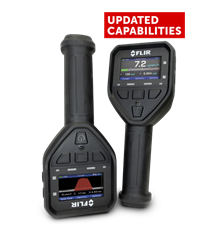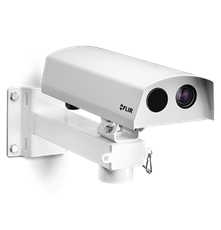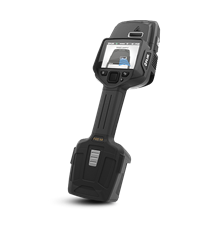
Safe Travels
Safety and Security for Transportation Centers
Everyone’s in a hurry, whether it’s traveling for pleasure or turning the wheels of commerce. On the road, it’s about the short cut and the fast lane. On the rail line, it’s about efficiency and on-time arrivals. Above all, we want to get there safely.
FLIR delivers intelligent transportation solutions with smart thermal and visible imaging systems that monitor traffic flow and detect incidents – despite lighting and weather conditions – to better inform travelers of hazards ahead, delays, and alternate routes. FLIR also protects transportation systems from potential terror-related activity by deploying fast, accurate, portable radiation and explosives detectors to help clear the way and keep people and operations moving.

San Jose Airport Installs FLIR End-to-end Perimeter Intrusion Detection System
4 Ways Thermal Streamlines Security for Airport PIDS
Airports are transportation hubs often located within close proximity to hotels, eateries, retail stores and sports venues. For this reason, large airports can have thousands of people approach their perimeter each day. With such a high throughput of people, security technology that detects and deters external threats is essential.

FLIR Systems Security Solutions for the Transportation Sector
FLIR Systems’ video surveillance solutions help minimize threats to safety and security for transportation facilities. FLIR gives staff a comprehensive overview of transportation infrastructure, recognizing unexpected events in real time and delivering the video verification necessary to separate minor incidents from urgent crises.

San Jose Airport Secures Perimeter with FLIR End-to-End Solution
After evaluating six different technologies for their perimeter fence line, SJC decided to install a FLIR end-to-end perimeter intrusion detection system composed of 57 FLIR Elara™ FC-Series ID thermal analytic cameras and 50 FLIR ioi HD Analytics Bullet cameras.


Monitor your facility from all angles
Our suite of thermal and visible security cameras, radars, and perimeter intrusion detection software provides the breadth of coverage needed to monitor critical areas for unauthorized activity and operational safety. Users also gain visual verification of alarms generated by other systems

Radiation Detection & Identification
FLIR’s identiFINDER R-Series radiation sensors detect, alarm, verify, locate, and identify radioactive material (gamma and neutron) in real-time. They come in a variety of form factors and sensitivities to meet mission requirements. Their common operating interface reduces training time and costs, while increasing operator confidence.


Reliable Detection in Adverse Conditions
Thermal cameras deliver clear imaging in low light conditions, sun glare, and light fog. Because thermal sensors create a sharp image based on subtle differences in heat signatures, they do not require light, offering reliable and uninterrupted 24-hour detection of vehicles, pedestrians, and cyclists.


Explosives Trace Detection
Fido X-Series handheld explosives trace detectors (ETD) feature FLIR’s proprietary TrueTrace® detection technology to detect a broad range of explosives with best-in-class sensitivity. They are simple to use and expedite frontline decision making for military, law enforcement, and first responders.


Advanced Video Analytics for Smart Infrastructure
When a vehicle or a pedestrian enters a detection zone, dedicated algorithms generate different types of traffic data including presence and incident-related data, information for statistical processing, and data for pre- and post-incident analysis. This information can trigger third-party systems, such as traffic lights, electronic traffic signs, or any other VMS panel.